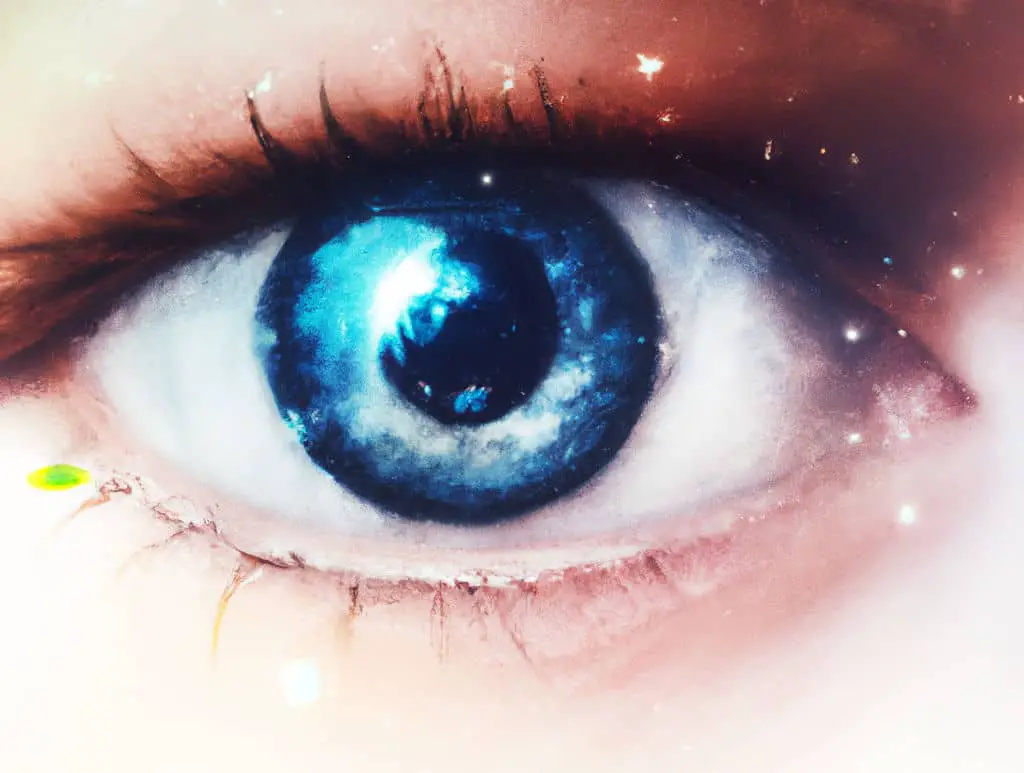The cornea, which is the clear outer layer of the eye, is the first tissue affected by UV exposure. The high energy UV radiation can cause a very painful burn to the cornea. This can be experienced by a welder as a ‘flash burn’ from the high intensity, high energy welders arc. The sudden, intense UV light is absorbed by the cells of the cornea and can cause them to be damaged and die. A welder will tell you that it is very painful. Those who spend a lifetime working in the sun, especially those in a highly reflective environment (water, or snow), or live close to the equator, have chronic UV exposure which can result in degenerative diseases of the cornea and damage to the surrounding conjunctiva.
The next tissue to absorb UV light is the lens of the eye. Similar to the lens of a camera, the lens of the eye is a clear structure, located behind the pupil. Its role is to focus light to the retina in the back of the eye. Long-term exposure to UV radiation can change the structure of the proteins within the lens of the eye. (2, 3) This restructuring of the matrix of the lens results in a lens that is no longer clear. The cloudiness within the lenses is called a cataract. Keep in mind, UV exposure is not the only cause of cataracts.
UV light, which is not absorbed by the cornea or lenses, passes to the retina, which is the last structure to absorb the UV radiation. The energy of UV radiation, particularly the higher energy UVB, can damage the light sensitive photoreceptors and retinal pigment epithelium (RPE), resulting in a cascade of events leading to cell death. An inflammation of the retina (retinitis) can result from an intense exposure, like looking at an eclipse or a day spent looking at the highly reflective water or snow, which is the double whammy of direct sun UV radiation and reflected UV radiation. A lifetime of chronic UV and blue visible light exposure is thought to be one of the causes of age-related macular degeneration (ARMD).(4) Research suggests that not only is UV radiation harmful to the retina, but intense blue/violet radiation from the visible light spectrum may also be damaging to the retina.(5) This has become known as the ‘blue light hazard.’ (6)
The Blue Light Hazard
The “blue light hazard’ refers to the accumulation of damage to the eye from the higher energy end of the visible light spectrum (High Energy Visible, HEV). The hazard is that while much of the UV radiation is absorbed by the cornea and lens, visible light in the blue/violet part of the visible spectrum makes it all the way to the very sensitive photoreceptors of the retina. These blue/violet wavelengths of the visible spectrum have higher energy than the green, which is termed medium energy, and red wavelengths, which are referred to as low energy. It is the higher energy of blue light (HEV) that is the ‘hazard,’ with the potential to cause damage to the light sensitive photoreceptors and eventual cell death with intense and/or long-term exposure. Exposure is constant and cumulative, that is to say, the negative effects may not be immediate, but accumulate over a lifetime.
Ocular Defenses
The eye has its natural defenses. The cornea and the lens of the eye absorb much of the UVA and UVB radiation which protects the very sensitive retina. Interestingly, as we age, our lenses take on a yellowish hue. This in and of itself provides additional protection for the retina, by blocking UV and some blue light. Those that have the most crystal clear lenses, like children and those who have had cataract surgery, have less of this natural defense, and in turn should be alert to eye protection.
The pupil is a diaphragm that opens or closes proportionally to the brightness of light. The pupillary reflex is to get smaller, admitting in less light to protect the retina.
The retina has the retinal pigment epithelium (RPE) and the macular pigments; lutein and zeaxanthin. The macular pigments filter out the UV and short wave blue light radiation before it reaches the photoreceptors. The RPE also scavenges for the potentially damaging free radicals.(7,8) These macular pigments naturally decrease with age. This is another reason why it is predominantly the senior population that develops age-related macular degeneration (AMD).
Anti-oxidants within the retina provide protection by sweeping up and neutralizing the reactive products, called free radicals of retinal metabolism. A diet poor in anti-oxidants, such as vitamin C and vitamin E, leaves the retinal tissues vulnerable to oxidative damage from high energy UV and blue light radiation.
There are risk factors that predispose someone to blue light damage, such as low macular pigment, tobacco usage, hereditary factors, and a lifetime of HEV radiation exposure. The diseased retina, depending on the disease process, may have these defenses compromised, resulting in a greater predisposition to damage by UV and blue/violet light.

